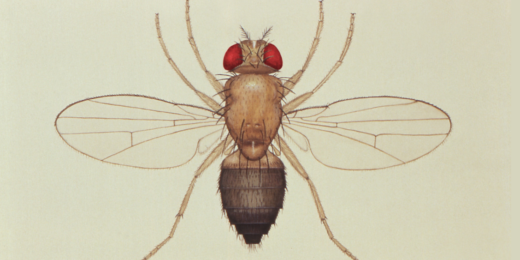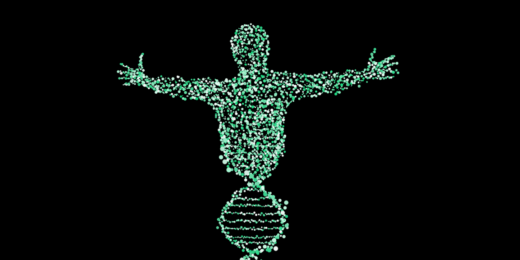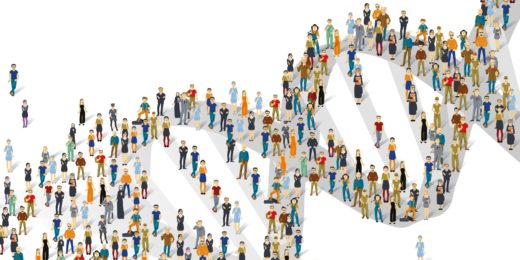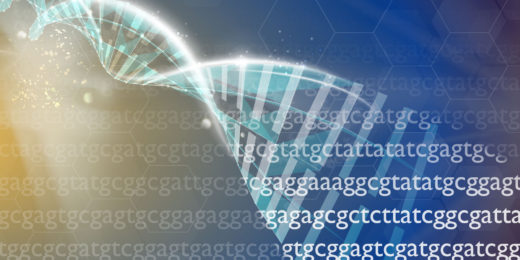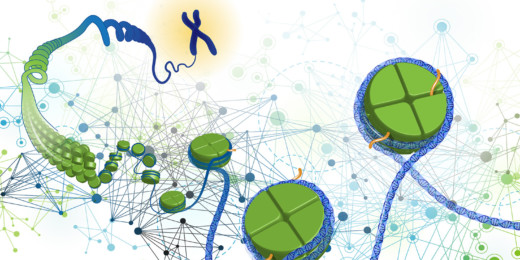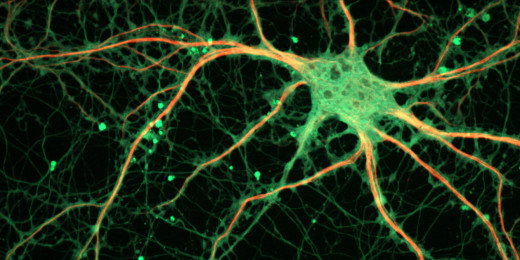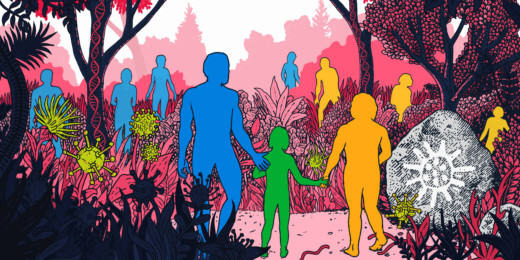Researchers leverage studies in fruit flies to identify a potential treatment for people with neurodegenerative disorder called spinocerebellar ataxia.
Category: Genetics
Improving PTSD care through genetics
Although sparked by trauma, PTSD has a genetic component as well, which can influence what therapy is most successful and provide other insights.
Study shows that having genetic information can affect how the body responds
New Stanford research found that knowing your genetic make-up can affect how your body responds and potentially affect your risk for certain conditions.
May I have this dance? Nuclear chaperones guide transcription factors to DNA
Proteins that guide transcription factors from the nuclear membrane to the DNA cause drug-resistant skin cancers and are new targets for drug development.
New algorithm could accelerate diagnosis of genetic diseases using clinical records
Stanford researchers led by Gill Bejerano have developed an algorithm that can rapidly inform diagnoses using clinical records.
Behind many a Parkinson’s case lurks a mutation in a gene called LRRK2 — why?
Genetic mutations affecting a single gene called LRRK2 play an outsized role in Parkinson's disease, but nobody's been able to say what the connection is between the genetic defect and the brain-cell die-off that characterizes the condition. Here's a clue.
Developing cells rely on genetic switches, DNA looping to become different tissue types, Stanford researchers find
DNA looping, or folding, directs a cell's developmental fate. Harnessing this 'DNA origami' could help researchers generate specific tissues for therapies.
A look at how colds and chronic disease affect DNA expression
Geneticist Michael Snyder has tracked the expression of his genes for three years, focusing on changes in response to chronic or acute disease.
Big data strikes again — subdividing tumor types to predict patient outcome, personalized treatment
A Stanford team has developed an algorithm that uses data about tumors to identify new classifications that can provide information about patient outcomes
Genetics of rapid deer antler growth, discovered
Stanford scientists identified two key genes responsible for the rapid bone growth of deer antlers, a finding that may one day help treat bone disease.
Getting to the root of cancer by examining protein binding
In a new study, a team of researchers has examined the relationship between protein binding to DNA and the development of cancer.
Stanford researchers find that small molecule may help treat enzyme deficiency
Stanford researchers have identified a small molecule that may help curb some of the symptoms of a genetic deficiency in glucose-6-phosphate dehydrogenase.
CRISPR technology turns skin cells into brain cells with high efficiency
Scientists use a tweaked version of CRISPR gene editing to turn skin cells into neurons, and simultaneously identify neuron-specific genes.
New take on CRISPR allows scientists to transport DNA to new locations
A new variation of gene-editing technology CRISPR allows scientists to reorganize DNA in a cell's nucleus in three dimensions, altering cell function.
Inherited Neanderthal genes protect us against viruses, study shows
Stanford scientists have found that viral infections shaped human genome evolution after interbreeding with Neanderthals 50,000 years ago.
Genetics of cholesterol reveal insights into heart disease and diabetes drug targets
Scientists find new potential drug targets for heart disease and diabetes, while shedding more light on the genetics of cholesterol, a new study has found.


